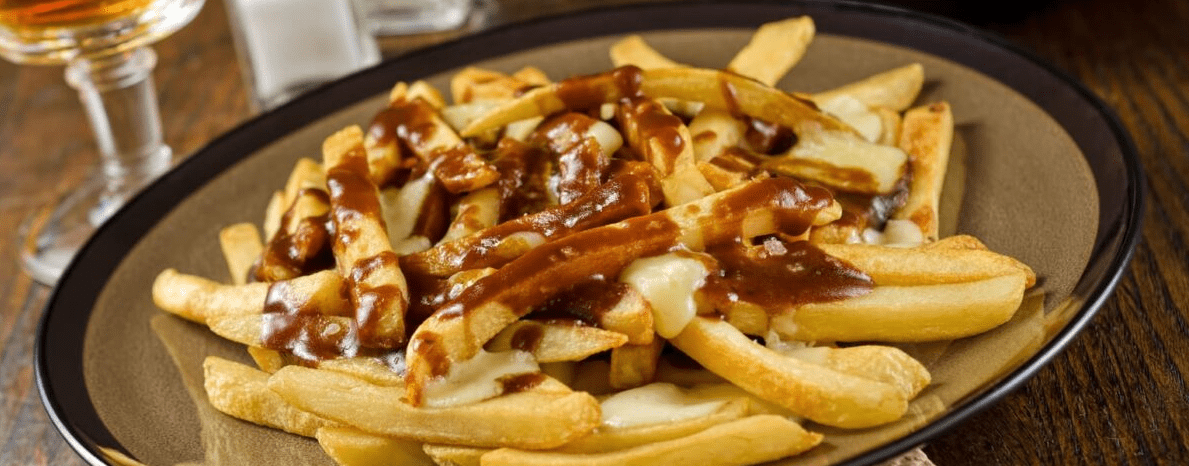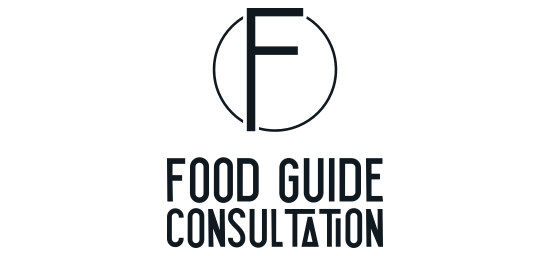Discovering Canadian Cuisine: A Guide to the Flavors & Nutrition

Canadian cuisine is a blend of Indigenous, European, and global influences, featuring diverse and high-quality ingredients, regional variations, and cultural traditions. This guide aims to provide a comprehensive overview of Canadian cuisine, from its history and iconic dishes to its health benefits and global challenges.
The History of Canadian Food
From Indigenous Roots to Multicultural Fusion Canadian cuisine has deep roots in Indigenous food traditions, such as the use of wild game, fish, berries, and roots. Later, European settlers brought their own culinary traditions, including French, British, and Scottish influences. In recent decades, Canada has become a multicultural country, welcoming immigrants from around the world and incorporating their cuisines into the national palate. The result is a fusion of flavors, techniques, and ingredients that reflects the diversity of Canadian society.
Iconic Canadian Dishes: From Poutine to Butter Tarts
Notable Canadian dishes include maple syrup, smoked salmon, Montreal-style bagels, and bannock, a type of bread traditionally made by Indigenous peoples. Some of the most popular and distinctive Canadian dishes include:
- poutine, a savory dish made of French fries, cheese curds, and gravy;
- butter tarts, a sweet pastry filled with butter, sugar, and eggs;
- tourtière, a meat pie from Quebec;
- Nanaimo bars, a layered dessert from British Columbia.
Canadian Ingredients: Fresh, Local, and Sustainable
Canada is home to a diverse range of fresh and flavorful ingredients, from seafood and game to fruits and vegetables. Some of the most popular Canadian ingredients include wild salmon, Arctic char, blueberries, Saskatoon berries, maple syrup, and venison. Canadian farmers and food producers are committed to sustainable and ethical practices, such as organic farming, fair trade, and animal welfare. By supporting local and sustainable agriculture, Canadian cuisine promotes health, environmental protection, and social responsibility.
| Canadian Ingredients | Description | Nutritional Benefits |
| Wild salmon | Rich in omega-3 fatty acids, protein, and vitamin D | Promotes heart health, brain function, and bone health |
| Blueberries | High in antioxidants, fiber, and vitamin C | Boosts immune system, improves digestion, and supports brain health |
| Maple syrup | A natural sweetener with trace minerals and antioxidants | Low glycemic index, anti-inflammatory, and immune-boosting properties |
| Venison | A lean and flavorful meat with iron, vitamin B12, and zinc | Supports muscle growth, energy production, and immune function |
Canadian Culinary Regions: Exploring the Tastes of the East, West, and North
Canada is a vast country with diverse geography and climate, which influences the regional variations in cuisine. Some of the most distinctive culinary regions in Canada are the East Coast, known for its seafood, lobster, and chowder; the West Coast, famous for its sushi, seafood, and Asian fusion cuisine; and the Northern territories, where Indigenous food traditions thrive and wild game, fish, and berries are abundant.
Health Benefits of Canadian Cuisine: From Anti-Inflammatory to Heart-Healthy
Canadian cuisine is known for its nutritional value and health benefits, which are supported by scientific research and traditional knowledge. Some of the healthful properties of Canadian ingredients include anti-inflammatory, antioxidant, and anti-cancer effects. By following a Canadian-style diet, which emphasizes whole foods, fresh produce, and lean protein, people can improve their overall health and reduce the risk of chronic diseases, such as heart disease, diabetes, and cancer.
Canadian Food Culture: Festivals, Traditions, and Etiquette
Canadian food culture is rich in traditions, festivals, and etiquette, which reflect the country’s diverse cultural heritage and social norms. Some of the most popular Canadian food festivals include the Calgary Stampede, the Montreal International Jazz Festival, and the Poutine Festivals in Quebec and Ontario. Canadian food traditions vary by region and occasion, but they often involve sharing meals with family and friends, celebrating holidays and special events, and respecting table manners and etiquette.
Canadian Beverages: From Maple Syrup to Ice Wine
In addition to its food, Canada is also known for its distinctive beverages, such as maple syrup, which is often used as a natural sweetener and flavoring in desserts, beverages, and savory dishes. Other popular Canadian beverages include beer, cider, whiskey, and ice wine,
Canadian Food Products and Guidelines
In addition to its rich culinary traditions and ingredients, Canada is also known for its comprehensive food policies and guidelines, which aim to promote good health, environmental sustainability, and food security. Here are some of the key Canadian food products and guidelines that you should be aware of:
Government of Canada Health: The Government of Canada provides a range of resources and programs to support healthy eating habits, such as the Healthy Eating Strategy, the Food Guide, and the Nutrition North Canada program. These initiatives aim to increase access to affordable and nutritious food, promote healthy eating habits, and reduce the risk of chronic diseases.
Health Canada Baby Food Guide: The Health Canada Baby Food Guide provides guidelines on the introduction of solid foods to infants, including tips on how to choose and prepare safe and nutritious foods, and how to prevent food allergies and choking.
Canadian Cholesterol Guidelines: The Canadian Cholesterol Guidelines provide evidence-based recommendations on the diagnosis, prevention, and management of high blood cholesterol levels, which are a major risk factor for heart disease and stroke. The guidelines recommend a healthy diet, regular physical activity, and medication if necessary.
Canadian Cardiovascular Society Guidelines: The Canadian Cardiovascular Society Guidelines provide recommendations on the prevention and treatment of cardiovascular disease, which is a leading cause of death and disability in Canada. The guidelines emphasize the importance of a healthy lifestyle, such as a balanced diet, regular exercise, and smoking cessation.
WHO Dietary Guidelines 2017: The WHO Dietary Guidelines 2017 provide global recommendations on healthy eating patterns, which are based on the latest scientific evidence and aim to prevent chronic diseases and promote overall health. The guidelines recommend a diet rich in fruits, vegetables, whole grains, and lean protein, and low in saturated and trans fats, salt, and added sugars.
Cholesterol Guidelines Canada: The Cholesterol Guidelines Canada provide evidence-based recommendations on the diagnosis, prevention, and treatment of high blood cholesterol levels, which are a major risk factor for heart disease and stroke. The guidelines recommend a healthy diet, regular physical activity, and medication if necessary.
Food Pyramid Canada: The Food Pyramid Canada is a visual representation of the recommended proportions of different food groups in a healthy diet. The pyramid emphasizes the importance of whole foods, such as fruits, vegetables, grains, and protein sources, and limits the intake of processed and high-calorie foods.
Healthy Eating Guide: The Healthy Eating Guide is a comprehensive resource on healthy eating habits, including tips on portion sizes, food labels, and cooking techniques. The guide also provides information on special diets, such as vegetarian, vegan, and gluten-free diets.
Canadian Healthy Vending Reviews: Canadian Healthy Vending Reviews is a website that provides reviews and ratings of healthy vending machines and snacks, which aim to promote healthy eating habits and support local businesses.
Food Policy Canada: Food Policy Canada is a research and advocacy organization that aims to promote sustainable and equitable food systems in Canada. The organization focuses on issues such as food security, food sovereignty, and food waste reduction.
Industry Reports Canada: Industry Reports Canada provides research and analysis on the Canadian food and beverage industry, including market trends, consumer behavior, and industry challenges and opportunities.
Plated Canada: Plated Canada is a meal kit delivery service that offers pre-measured and prepped ingredients for home-cooked meals, which aim to promote healthy eating habits and reduce food waste.
Cheeky Cherry Chilliwack: Cheeky Cherry Chilliwack is a local food business that specializes in homemade cherry products, such as jam, jelly, and syrup, which are made from locally grown cherries.
Canadian Foods that are Not Sold in USA: While some Canadian foods are well-known and popular in the United States, such as maple syrup and poutine, there are also many Canadian foods that are not sold in the USA. Some of these foods include ketchup-flavored potato chips, Coffee Crisp candy bars, Smarties (different from the American version), and All-Dressed chips. Other unique Canadian foods include Butter Tarts, BeaverTails (a type of fried dough pastry), and Cheeky Cherry Chilliwack (a cherry-flavored soda).
